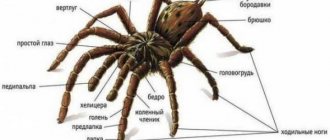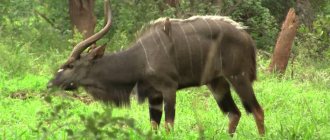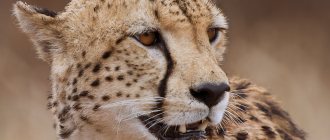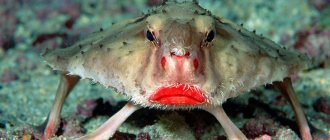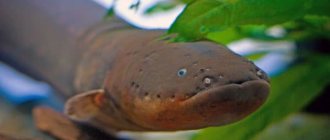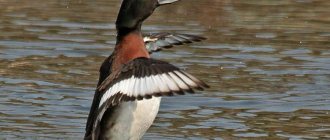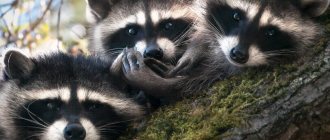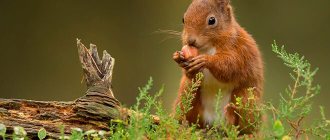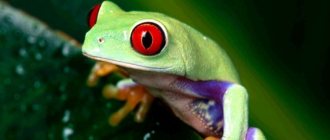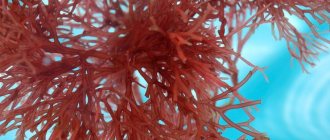All components of the animal and plant world are closely interconnected and enter into complex relationships. Some are beneficial for the participants or even vitally important, for example lichens (the result of a symbiosis of a fungus and algae), others are indifferent, and still others are harmful. Based on this, it is customary to distinguish three types of relationships between organisms: neutralism, antibiosis and symbiosis. The first one, in fact, is nothing special. These are relationships between populations living in the same territory in which they do not influence each other and do not interact. But antibiosis and symbiosis are examples that are very common; they are important components of natural selection and participate in the divergence of species. Let's look at them in more detail.
Symbiosis: what is it?
Symbiosis is usually understood as a special relationship between organisms in which both partners or only one benefit. This term was first used by the German microbiologist and botanist G.A. de Bary. He established it by studying lichens (they are the result of a symbiosis of algae and fungus, in the photo), and contrasted it with parasitism. There are several forms of mutually beneficial cohabitation: mutualism, cooperation, commensalism.
Coyotes and Badgers
They are real hunting partners. The coyote chases prey into an open space, and the badger climbs into the victim's hole and waits for it there. When she is about to hide in her house from her pursuer, a surprise awaits her there in the form of an ambush.
It turns out that either the coyote or the badger stays with dinner. Such mutually beneficial cooperation makes it possible to increase the probability of a successful hunt by approximately three times.
Commensalism
Commensalism is actually the unilateral use of one species by another, without causing any harmful effects on it. It can come in several forms, but there are two main ones:
- Tenancy (sinoikia), that is, providing another type of shelter. Examples of symbiosis in nature in this form are very numerous. In particular, the female Kamchatka kareprokt lays eggs under the shell of a crab, and the freshwater bitterling lays eggs in the mantle cavity of a bivalve mollusk - toothless.
- Freeloading, or epicoikia. One species (commensal) attaches to another (the host) or lives near it, feeding on the remains of its food, and sometimes moving with its help. Freeloading is characterized as one of the paths to parasitism. The photo shows sharks and pilots, who often follow them in whole schools and feed on the leftovers.
All others are to some extent modifications of these two forms. For example, entoikia, in which one species lives in the body of another. This is observed in carp fish, which use the cloaca of holothurians (a species of echinoderm) as a home, but feed outside it on various small crustaceans. Or epibiosis (some species live on the surface of others). In particular, barnacles feel good on humpback whales, without disturbing them at all.
Large fish and cleaners
Sharks, moray eels and other giant fish swim into the reef area after a heavy meal, open their mouths and allow wrasses or gobies to remove food debris and parasites from their teeth.
This allows the giants to maintain their oral cavity in proper condition, and the cleaners to eat well.
Cooperation: description and examples
Cooperation is a form of relationship in which organisms can live separately, but sometimes unite for common benefit. It turns out that this is an optional symbiosis. Examples:
- Sea anemones and hermit crabs that settle in empty mollusk shells; he carries it everywhere along with the polyp, increasing the space for catching prey, and thereby providing himself with protection.
- Large fish and shrimp, which cleanse their bodies of parasites and dead cells.
- Large ungulates and birds that peck parasites (ticks) from their fur or, when molting, pluck out shreds of winter wool and use it to build nests.
Turtles and butterflies
Tears flowing from the eyes of turtles are a way to get rid of excess salt. However, they cannot wipe them off on their own, and when they dry out and leave marks, they create disturbances and unpleasant sensations for the reptiles.
Butterflies, in turn, often experience a salt deficiency and make up for it by drinking turtle tears.
Animal symbiosis: examples
Mutual cooperation and cohabitation in the animal environment are not uncommon. Here are just some of the most interesting examples.
- The honey guide bird and its companions, for example a bear, and often people. She herself feeds only on bee larvae and wax, but cannot get them, so she begins to actively call for helpers, making loud sounds. Larger allies destroy the nest, and she happily feasts on the common prey.
- Bison and cowbird. Thick fur becomes a haven for parasites, causing the animal a lot of inconvenience. This is where the feathered helper comes to the rescue, cleaning everything and in return receiving food and shelter, escaping from the cold in the thick cover. Similar mutual assistance is observed in the mongoose and warthog (pictured).
- The plover bird fearlessly brushes the crocodile's teeth, picking out leftover food from there.
- Zebras prefer to share their meals with ostriches, which, having excellent hearing, instantly notify everyone of approaching danger.
- A shark and a sticky fish, which, with the help of a special suction cup, is attached to the back of the predator and accompanies it everywhere, feeding on the remains of its prey.
Warthogs and mongooses
This is a very strange union. Seeing a mongoose even from afar, this huge fanged boar immediately lays down on the ground and waits.
Mongooses, approaching the warthog, begin to perform strange manipulations, which from the outside look more like a massage.
In fact, they simply look for insects on the skin of a boar and eat them, thereby saving the animal from suffering.
Symbiotic relationship between plants
Plant symbiosis is very common, and if you look closely at the world around us, you can see it with the naked eye.
- Certain types of mushrooms and trees, when living together, form mycorrhiza among themselves. For example, birch and boletus.
- Lichens are an example of symbiosis between two plant organisms, most familiar to everyone from school biology courses.
- Epiphytic (non-parasitic) plants are “tenants” (commensalism) on trees, which serve as a habitat for them, but not as a source of nutrients. They obtain them from dying tissues and secretions of the host. Epiphytes include algae, mosses, ferns, lichens, which themselves represent a symbiosis of a fungus and algae, and flowering plants.
- Centuries-old trees of the rainforest and the vines that use them as support.
- A symbiosis of the aquatic fern Azolli with the blue-green alga Anabena, which has the ability to fix atmospheric nitrogen.
Amensalism
The effect of a substance that mold releases on surrounding bacteria is an excellent example of amensalism.
Amensalism is an association between two organisms of different species, where one species is inhibited or killed while the other is unaffected. Amensalism can be accomplished in several ways. Most often, it occurs through direct competition for natural resources.
For example, if there is a small tree that is trying to grow next to a large tree, then the mature tree will most likely displace it in the competition for resources. It will intercept most of the light, and its mature root system will be much better at absorbing water and nutrients, leaving the seedling in an environment without sufficient light, water or nutrients and harming it.
However, a large tree will not be harmed by the presence of a young tree, since it cannot block the light of a taller tree, and the amount of water and nutrients it can absorb is so small that a mature tree will not notice the difference.
Amensalism can also occur if one species uses chemicals to suppress the growth of or kill other species. A very famous example of this type of amensalism led to the discovery of antibiotics known as penicillin. Alexander Fleming observed amensalism occurring on a plate of Staphylococcus aureus surrounding a contaminating spot of penicillin mold. He was the first to learn that mold releases a substance that kills the bacteria around it. Other scientists later developed ways to mass produce the bacteria-killing chemical we know as penicillin.
Symbiosis (examples) of animals and plants
- Tropical myrmecodia plant and ants: they live in thickened stems, providing protection from other insects, while at the same time acquiring a home.
- The most striking case, in the literal sense of the word, is the sea anemone and clown fish (pictured), which cleans the predator plant of food debris, receiving protection and shelter for this.
- The sloth and the algae that grow in its fur, giving it a greenish color.
- Symbiosis of fungi and Atta ants or termites.
- Humans and bacteria that form the intestinal flora.
- Pollination of plants by one species of bird or insect is observed, for example, in orchids - this is a very common symbiosis.
Examples are very numerous, and many relationships between different elements of the plant and animal world are still poorly understood.
Mutualism
Mutualism is one of the best known and most ecologically significant types of symbiosis. Such relationships exist, for example, between insects and plants (pollination). Such cooperation is favorable and mutually beneficial for both parties. Insects, birds and even some mammals obtain food in the form of nectar. The plant, on the other hand, receives a major reproductive advantage, namely the ability to transfer its pollen to other plants.
Since plants do not often end up together, it is quite problematic for them to perform the reproductive function without intermediaries. In this case, symbiosis is simply vital for them, and in the full sense of the word. Without pollinators, many plants might simply gradually disappear. On the other hand, without pollinating plants, many insects themselves would be in big trouble. This is truly a mutually beneficial alliance.
Examples of symbiosis in biology do not stop there. Another fascinating form of beneficial cooperation can be seen in the relationships between certain species of ants and aphids. Aphids are tiny, soft insects that feed on plant sap and produce a certain amount of sugar and water as waste. This becomes suitable food for some types of ants. In turn, the ants often move them to a new place, thus providing additional sources of food.
What is antibiosis?
Essentially, this is the opposite process of symbiosis, in which two populations interact and one or both of them exert an overwhelming influence on the other. That is, this is an antagonistic type of relationship. Antibiosis can exist in three forms: competition, predation and parasitism. An example of the first case is the suppression of the growth of microorganisms by fungi that produce antibiotics. In predation, one species uses another as food, killing it (foxes and hares, lions and wildebeest).
In parasitism, one species uses the other as a source of food and habitat. Parasites can be temporary (mosquitoes, leeches) or permanent (roundworm, lice, tapeworm).
Symbiosis, examples of which are found at almost every step, including in human life, as part of natural selection, is an important component of evolution as a whole.
Parasitism
Grasshopper infected with parasites
Now let’s imagine that the pathogenic microorganism still managed to gain a foothold in the human large intestine. The host serves as a habitat and food for bacteria, but the bacteria, in turn, cause disease in the host. This is an example of parasitism, or an association between two different species where the host is harmed. Not all parasites cause disease. Lice, ticks, fleas and leeches are all examples of parasites that do not usually cause disease directly, but they do suck the blood of their host and this causes some harm, not to mention discomfort.
Parasites can also act as vectors that transmit disease-causing pathogens to other animal species. The bacteria that causes bubonic plague is carried by rodents such as rats. The plague bacteria then infects the fleas that bite the rats. Infected fleas transmit the bacteria to other animals they bite, including humans. In this case, both the fleas and the bacteria are parasites, but the fleas are also a carrier that transmits disease-causing bacteria from the rat to other animals and humans.
Large fish and cleaners
Sharks, moray eels and other giant fish swim into the reef area after a heavy meal, open their mouths and allow wrasses or gobies to remove food debris and parasites from their teeth.
This allows the giants to maintain their oral cavity in proper condition, and the cleaners to eat well.
Why are mycelial meshes needed?
Mycelium nets, or simply mycelium, as it is commonly called, for most people is simply called mycelium, consisting of the finest intertwined threads. These filamentous mycelia form special organs that help them gain a foothold in a habitable environment. Such a medium can be the soil surface, the tree itself or its roots. Mycelium performs many very important tasks:
- processing cellulose with enzymes to produce natural fertilizers;
- adaptation to external conditions;
- synthesis of spores and their preservation.
The mycelium in appearance resembles white fluff or a network, as it is represented by the finest threads. These threads have many branches called hyphae. Their thickness is 1.5-10 microns. To understand this size, you need to say that 1 micron is equal to 0.001 mm. The mycelium set consists of bundles that resemble the roots of ordinary plants. They make it possible to adhere to a variety of surfaces, from soft soil to hard wood. In mycorrhiza, other threads enriched with nutritional elements are formed. They are black, their purpose is defense. They allow the mycelium to survive and withstand low temperatures. There is a certain cycle of development and mycelium:
- it all starts with small spores that form the primary type of mycelium;
- crossing cells from a pair of spores contributes to the appearance of a secondary one;
- then comes the secondary growth phase;
- after the vegetative mycelial networks have matured, the cell begins to divide very actively, and when this process reaches its maximum activity, the production of the fruiting body begins;
- after the last change it becomes tertiary.
There is another classification:
- completely submerged is under the nutrient substrate. That is, it is hidden underneath;
- air is connected only with the environment.
And one more classification:
- coenotic or noncellular. There are no side partitions between the cells. It is a single cell with a large number of nuclei inside;
- septate or cellular. Cells are divided into transverse compartments, as a result of which each cell can contain a certain number of nuclei.
Myceliums live on stumps, old rhizomes, tree bark or inside the trunk. This helps to understand which mushrooms are associated with trees, which we will talk about next.
Coyotes and Badgers
They are real hunting partners. The coyote chases prey into an open space, and the badger climbs into the victim's hole and waits for it there. When she is about to hide in her house from her pursuer, a surprise awaits her there in the form of an ambush.
It turns out that either the coyote or the badger stays with dinner. Such mutually beneficial cooperation makes it possible to increase the probability of a successful hunt by approximately three times.
Turtles and butterflies
Tears flowing from the eyes of turtles are a way to get rid of excess salt. However, they cannot wipe them off on their own, and when they dry out and leave marks, they create disturbances and unpleasant sensations for the reptiles.
Butterflies, in turn, often experience a salt deficiency and make up for it by drinking turtle tears.
Warthogs and mongooses
This is a very strange union. Seeing a mongoose even from afar, this huge fanged boar immediately lays down on the ground and waits.
Mongooses, approaching the warthog, begin to perform strange manipulations, which from the outside look more like a massage.
In fact, they simply look for insects on the skin of a boar and eat them, thereby saving the animal from suffering.
How did the different species mate?
This union is very interesting. The roots of the plant secrete a special hormone that awakens fungal spores. Subsequently, these spores form thin threads, intertwine and often bloom on plants. This is called mycorrhiza. When the fungus just begins to settle in the roots, the tree resists it. This is a common reaction to such events. The tree thinks it is a virus and tries to get rid of it. But plants with spores overcome the immune system in ways unknown to science. The tree must accept new neighbors and live. For normal cohabitation, the tree needs to rebuild its metabolism so that the new neighbor does not suck out all the juice.
Protective substances appear on the roots and other parts of the plant, but do not act on fungi, but on harmful insects and microorganisms.
The remaining threads grow underground. They don't absorb solar energy like plants, which get it through their leaves, but need to look underground for nutrients. That is, they are in the soil. The tip of the mycelium, several micrometers thick, cuts into the rock and slowly dissolves with digestive acid. A liter of forest soil contains a million fungal threads. Over the course of a year, they create pores 150 meters long, transforming hard rocks into mineral-rich soil. If the earth had not been processed in this way, then about 385 million years ago plants would not have appeared at all. But the mushrooms themselves cannot exist without neighbors. They give them sugar formed on the leaves in the light, and their own rotten waste.

